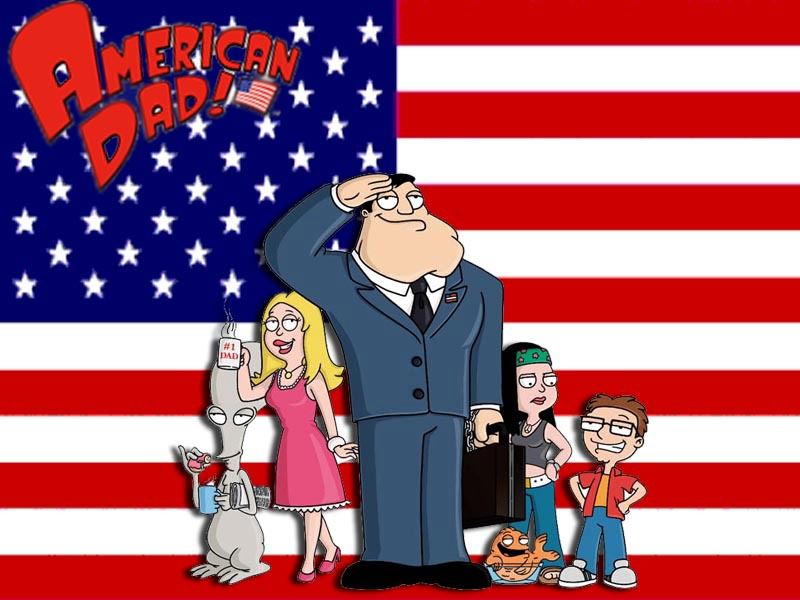Season Review: American Dad Season 16
Overview:
The incorrigible Smith family return for another season of chaotic misadventures that prove why family can bring out the best and worst in each other. American Dad’s 16th season continues to present weird, acerbic comedy through Stan Smith and the rest of these well-defined characters. It may seem like the Smiths have a strong hold on themselves and Langley Falls by now, yet this new season brings evil dolls, magic crystals, wellness cults, and even time travel into the mix to prove that even after 16 seasons there’s still never a dull moment in American Dad.
Our Take:
Any series that has over 300 episodes produced is going to face an uphill battle with a new season. Common consensus is that the most recent episodes of The Simpsons, Family Guy, and even Bob’s Burgers have begun to show signs of fatigue and become caricatures of themselves that prioritize easy and efficient storytelling over the groundbreaking risks that helped these series shake up the system in the first place. It’s only natural for animated series to hit diminishing returns at this point, which is exactly why it’s become so mystifying to watch American Dad catch its second wind and experience a Renaissance of content since it’s headed over to TBS from Fox. Admittedly, season 16 of American Dad isn’t the series’ finest year, but it’s still pretty damn good and many of these episodes can go head-to-head with installments from the series’ glory years. That’s something that unequivocally cannot be said for the other series that continue to churn out content for decades. American Dad still has lots to say and its latest season is full of strong stories that reflect just how far this show, and its characters, have come.
American Dad has told so many stories that it understands that the best way to find fresh life is through experimenting with different character combinations and figuring out who works best together. Jeff surprisingly becomes a lynchpin to this season as these episodes explore his relationship to Hayley, Stan, and even Steve. This season cultivates a brotherly dynamic between Steve and Jeff for the first time in the series and it’s such a natural development. Some of Jeff’s very best episodes are present in this season between “Lumberjerk,” Shakedown Steve,” and “Dr. Sundersun’s SunSuckers,” all of which explore different facets of Jeff’s character. This paints a very bright future for Jeff’s continued relevance in the series and the character has never worked better than he does now.
This season also effectively juxtaposes Jeff and Hayley against Stan and Francine on a number of occasions and positions them as a proto version of the couple in many respects. This generational aspect of the Smith family really comes into its own across these episodes and it’s very satisfying whenever the series compares and contrasts Hayley and Francine. There’s even an episode that’s devoted entirely to Klaus and Rogu, which excels with its treatment of Rogu as his own entity and not just using him as an odd extension of Roger. More Rogu is always a good thing and hopefully next season he’ll get even more solo opportunities to shine.
American Dad has established a set structure for itself that it sometimes can’t escape from, but there are still strange, ambitious episodes like “Stan Moves to Chicago” where Stan trades his family life for a freewheeling existence of stand-up comedy with Klaus and his boys along for the ride. “Wondercabinet” is one of the weirdest installments that the series has ever done, which uses crystals and a gonzo cyclical narrative to tell a juggernaut of a story between Stan and Steve. This season employs some very smart premises that poke fun at American Dad starting to show its age, like through inspired deconstructions of Roger’s many personas. In “Little Bonnie Ramirez” Roger worries that he’s possibly lost his edge with his characters, yet American Dad examines the reverse prospect in “Mused and Abused” or “Dr. Sundersun’s SunSuckers” where Roger finds a level of ordinary complacency in a persona, only to learn that this can be more destructive than chaos.
There are also no shortage of episodes that lean into some particularly absurdist premises, such as the time travel shenanigans that are present in “Stan & Francine & Stan & Francine & Radika” or the concept of Stan’s imaginary friend having grown up and come to collect on past debts in “Henderson.” The entire artist aesthetic that’s featured through “Mused and Abused” is also incredible and there are frequent moments from this season where the level of animation fidelity and impressive visual spectacles are responsible for crucial punchlines in episodes. It’s exciting to see the series take more risks and think outside of the box when it comes to the animation and standard look of the series. Even installments that are misfires, like “Flush After Reading,” still feature inventive visual flourishes that at least attempt to bring something new to the table even if the storytelling and comedy doesn’t connect.
The episodes from this season cover the whole spectrum in terms of genre and the characters that are on display, but the season also has some surprising fun with continuity, like in “Comb Over: A Hair Piece,” which picks up a plot thread from well over a decade ago and attempts to do something new with an abandoned fact of Stan’s character. It’s appreciated that American Dad is able to fearlessly look forward as well as affectionately turn to the past to deliver consistently entertaining storytelling. For every emotionally cathartic entry that gets to the core of the members of the Smith family and the delicate ecosystem that they’ve forged together there’s an equally absurdist episode that pushes the characters into utter madness, like in “Plot Heavy,” where dueling nonsense culminates in a Weekend at Bernie’s-esque spite scheme.
It’s exciting to see such life in a series that’s turned out more than 300 episodes and 90% of the installments from this season are absolute winners when it comes to comedy, character, and absurdity. That being said, there are still some low points throughout this season like “Flush After Reading” and the Halloween installment, “Steve’s Franken Out.” The continued look at Jeff and Hayley’s dynamics with the rest of the family, while valuable, also does become somewhat repetitive by the end of the season after similar stories have been able to play out in succession. Again, it’s obviously difficult to explore new territory after this many episodes and these are minor concessions in what’s still a very strong and encouraging collection of episodes.
The most important thing about American Dad’s 16th season is that it ultimately leaves the audience wanting more and gives the impression that there are still lots of stories to tell within this series. Not every episode is a gem, but it’s clear that American Dad is far from tapped dry and recent elements like the presence of Rogu and the increased focus on Hayley and Jeff’s relationship have helped rejuvenate the show where it’s needed. At this point it feels like American Dad has done literally everything, but the characters remain entertaining and lovable and the universe continues to become more fluid and unpredictable. There’s a feeling of unpredictable excitement that still takes over the viewer when they turn on an episode of American Dad, which is something that’s increasingly difficult to do on television, especially with a series that’s been on for nearly two decades. American Dad should be allowed to continue to indulge their craziest impulses until that magical energy vanishes, which seems like it’s still years away from being a concern.


























Do we know if Hulu will be the only entity to have the dub, or if it will be on other platforms, too? The show in general is definitely going to be on multiple platforms.